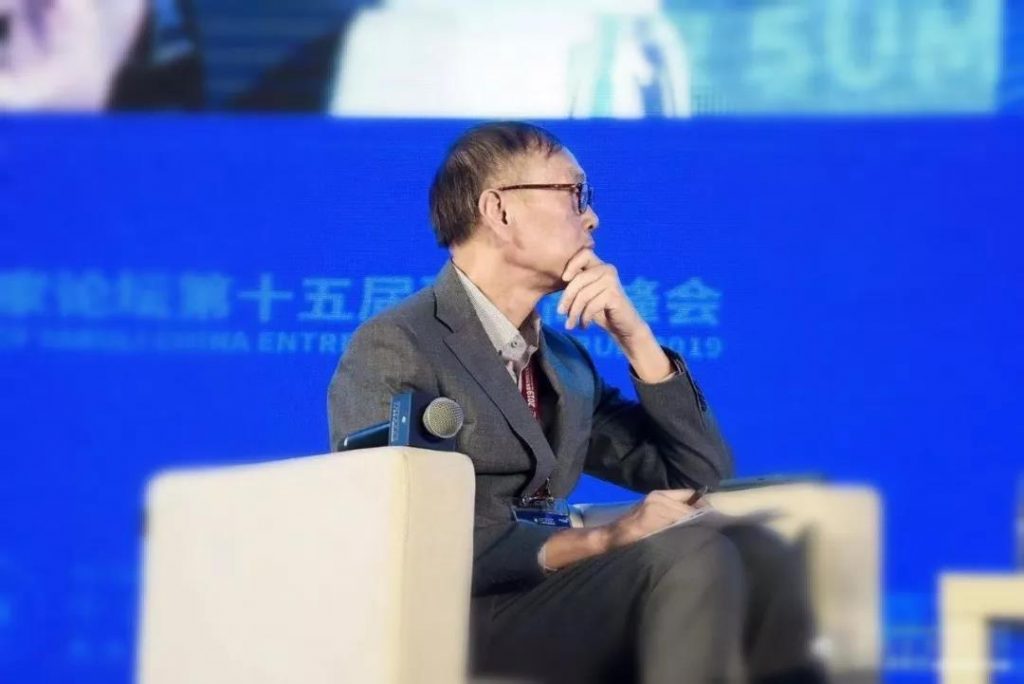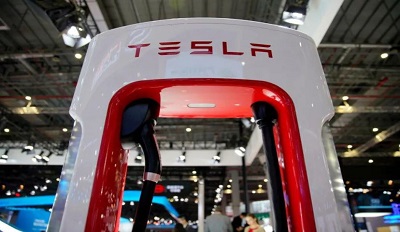
在高端咨询领域里,没有人从一开始就会知道问题的答案是什么。解决难题是一个过程,需要所有相关人士参与,包括咨询团队各员和客户。突破的想法往往都透过讨论而产生的结果。每个参与项目的团队成员都有责任和义务积极参于讨论,为寻找事实真相作出贡献。It’s our job!


在高端咨询领域里,没有人从一开始就会知道问题的答案是什么。解决难题是一个过程,需要所有相关人士参与,包括咨询团队各员和客户。突破的想法往往都透过讨论而产生的结果。每个参与项目的团队成员都有责任和义务积极参于讨论,为寻找事实真相作出贡献。It’s our job!

本文是高风咨询CEO谢祖墀博士发表在《亚布力观点》10月刊上的观点文章。谢博士重温了《边缘上竞争》在组织方面的思考。他认为在快速变化和复杂的经营环境中,领导者在带领组织开发新产品时,关键是要专注于不断发生的外部环境的变化。这可以通过在不同力量之间不断取得动态平衡的组织结构,广泛的沟通和对未来产品的低成本实验来进一步实现。
2019 年8 月21 日,我在《今日头条》发布的文章《重温< 边缘上竞争>》中提到了《边缘上竞争》(Competing on the Edge)这本书(注:在内地亦被译为《边缘竞争》,由华章出版社于2001 年发行)。此书由美国斯坦福大学一位女性学者肖纳• 布朗(Shona L. Brown)和她的博士论文导师凯思琳•艾森哈特(Kathleen M. Eisenhardt)在1998 年所合著。其理论为管理界内首次提出的较完整的动态战略理论,有划时代的意义。在这篇文章里,我想与大家重温《边缘上竞争》在组织方面的思考。布朗的理论在企业组织型态方面有三点主导思想:
一,优秀的组织领导者能使用最小规模组织结构,并通过广泛的沟通来提供员工明确的角色定位和清晰的工作优先次序。
二,优秀的组织领导者能有效地选择运用低成本的方法去尝试和测试新的想法,以便为将来的新项目开拓新路径。
三,优秀的组织领导者能成功地带领组织团队从一个项目过渡到另一个项目。
在第一点中,布朗指出她在写书之前的研究结论:宽松灵活的工作描述、不制定组织结构图、较少的工作规则规范、组织内部高质量和高频的沟通均可以促进组织的创新。她的研究表明:成功的组织需要在明确的工作角色定位、清晰的工作优先次序和良好沟通水平这三者之间取得平衡。这有助于组织领导者采用较为全面的方法,而不只是让团队成员们独立专注于自己所负责的领域。领导者的另一个关键成功要素是安排工作的优先次序。通过进行市场研究和对未来的预判,使项目与可确定和预判的经济效益保持一致——只有那些符合标准的项目才会继续进行。之后他们将相应地分配资源。这能够帮助团队成员维持合理的工作进度。团队成员不仅在项目内被鼓励进行交流,在不同项目间也进行交流。这将使团队成员们在不同的顶目中彼此交流,并基于已经完成的工作进行讨论。员工也可通过正式或非正式的渠道进一步沟通,例如电话会议、电子邮件(注:例如今天的微信、钉钉等),甚至是集体午餐等。这些沟通方式可以产生积极的绩效反馈,从而提高员工的积极性。这可以帮助管理人员集中精力在外部环境的变化上,并适应环境的快速变化。

在第二点中,公司需专注于他们当下所拥有的知识,这意味着他们可以采取过往的经验。此外,展望和预判未来并为之做好充分的准备也十分重要。布朗指出,成功的领导者会在按时交付产品(注:这里的“产品”是广义的含义,包括传统意义的产品,服务模式及商业模式)与投资低成本创意继而测试其可行性两者之间取得平衡。通过专注于实验产品,与合作伙伴进行频繁地沟通来实现这一点。在原有产品中添加少量创新元素来拓展新产品,如果新产品成功被客户使用,便会将这些实验成功的产品添加到最终产品中,这能有效地加快产品创新和更新迭代的周期。他们创办战略联盟(注:用今天的术语来说即“生态系统”),为未来创造更好的愿景,因为这可以预测市场趋势,并提供强大的未来合作伙伴关系。成功的企业往往还会利用顶尖的人才来研究不同领域,并与高层领导讨论其发现,这将有助于创建对未来的分析及预测。同时,低成本的实验提供了重要的学习经历。长远来看,每次学习经历都可以帮助企业预测未来的市场需求,并帮助组织领导者在快速变化的市场上变得更加主动而不是被动。
在最后一点中,布朗提到成功的组织领导者在当前项目和未来项目之间实现了无缝衔接和过渡,这是通过预测项目间的时间间隔和精心设计转变过程来完成的。成功的企业能够预判产品更新及其所需的周期。他们会在周期前就拟好项目间的过渡计划。一旦公司想要增加额外产品,原计划的周期就会被打破,资源将会被消耗,而领导者则会面临失败。当没有计划好并以随意的方式过渡时,组织将只剩下很少的成员和资源,如若加之缺乏资源规划,产品将最终宣告失败。在项目间通过特定的时间表,计划的过渡来创建节奏是至关重要的。
总结以上三点,在快速变化和复杂的经营环境中,领导者在带领组织开发新产品时,关键是要专注于不断发生的外部环境的变化。这可以通过在不同力量之间不断取得动态平衡的组织结构,广泛的沟通和对未来产品的低成本实验来进一步实现。
虽然《边缘上竞争》这本书是布朗女士20年前的著作,但我们可以看到她划时代的观念。无论在战略方面亦或企业组织思想方面,她都看到了整个商业社会发展的趋势。这是非常难得的,特别是当时还是“前互联网时代”。她20 年前提出这些主导思想,到了今天还未完全过时,仍然能成为现今企业发展或组织建造时考虑的重要思想依据。当然,今天的社会因为科技的高速发展,特别是移动互联网的出现,很多地方发生了根本性的重大变化,无论在战略方面还是在组织设计方面都需要很多新的调整;但我们已经隐约地看到“小微裂变” 、“试错”、“迭代” 、“MVP”(Minimum Viable Product,最小可用产品)、“灰度”、“平台” 、“生态系统”、“韧性组织”等今天好多人琅琅上口的管理术语的浮现。
在企业战略和组织发展理论的历史洪流中,能成为殿堂级改变人们观念的理论其实不多,大概是每十年或之上才会出现一次。在我看来,《边缘上竞争》是其中之一。发酵在人类进入一个新时代(互联网时代)拐点之前(不是之后),实为难得。在斯坦福大学取得博士学位之后,布朗到了麦肯锡工作,之后到了谷歌,协助谷歌制定它的战略、组织原则和执行,是谷歌成功的奠基者之一。其实大家仔细地观察一下,不单是谷歌,亚马逊、阿里、腾讯、华为等今天我们视为极为成功的企业,甚至美团点评、字节跳动等新锐企业身上,也可以看到布朗理论的痕迹。从这些现象来说,20 年前的布朗女士所提出的思想观点是非常到位的,也非常值得大家重温和深入研究。
注:本文图片均来自网络
本文发表于《亚布力观点》(2019年10月刊)并保留所有权利
作者简介
谢祖墀 (Dr. Edward Tse) 是高风咨询公司的创始人兼CEO。同时他也是香港国际金融学会创会理事。谢博士是中国管理咨询行业最早的从业者之一,在过去20年中,他曾带领两大国际管理咨询公司在大中华区的业务。他为包括国内外的数百家企业提供过咨询服务,涉及在华商业的各个层面,以及中国在世界的角色。他曾为中国政府提供过战略、国有企业改革以及中国企业走出国门的建议。他已撰写数百篇文章以及四本书籍,其中包括屡获殊荣的《中国战略》(The China Strategy,2010年)和《创业家精神》(China’s Disruptors,2015年)。
如果想了解更多前沿资讯,请访问谢祖墀博士的博客(www.edwardtseblog.com)。

Under ‘One World, Two Systems’, US Companies that Stay in China Must Evolve
By Edward Tse and Bill Russo
27 Sep, 2019
Original published by South China Morning Post titled Under ‘One World, Two Systems’, US Companies that Stay in China Must Evolve on September 27, 2019. All rights reserved.
More US companies are staying in China than are deciding to leave, despite Donald Trump’s trade war rhetoric. But there is an increasing need to devise different strategies, as China’s market conditions become more sophisticated and unique
In a recent business report by the American Chamber of Commerce in Shanghai, 77 per cent of the surveyed companies reported that their China operations are profitable. Around 60 per cent are optimistic about the five-year business outlook and nearly half are increasing investment in 2019.
The findings were consistent with those of another report, by the US-China Business Council in August, suggesting that 87 per cent of the US companies operating in China do not want to leave.
Both are slaps in the face for US President Donald Trump, who earlier called for American companies to leave China and to return to the US. Very few, if any, have followed.
In July, 100 academics and policy advisers around the US wrote an open letter to Trump, advising that Beijing is neither an economic nor national security threat that must be confronted in every sphere.
US animosity towards China will eventually damage its own reputation, as well as the economic interests of all nations. There can be no winner in a zero-sum game.
The above-mentioned survey results and reactions are consistent with our first-hand experience of consulting for the senior management of many US companies in China.
As Trump’s trade war drags on, while some foreign companies have chosen to leave China – usually those in labour- or cost-intensive sectors such as shoe and apparel manufacturing – most have chosen to stay, simply because of the size of the China market or the high degree of integration of their supply chain with Chinese suppliers and manufacturers, or both. Paradoxically, after Trump’s plea, US retailer Costco opened its first store in Shanghai.
Also, electric vehicle maker Tesla is set to start production by the end of this year in its wholly owned manufacturing plant in Shanghai.
Among those that have chosen to stay, there is an increasing need to devise different strategies for China and the US. As China’s operating environment evolves, its market conditions are becoming more sophisticated and unique. For example, in the tech sector, some aspects of the two countries are diverging and companies will need to consciously adapt.
Terry Gou, founder of Apple supplier Foxconn, expects a divide in 5G technology between China and the US, because of underlying differences in strategic positioning, development and market needs. As fifth-generation cellular networks and their commercial applications evolve, the divergence will only increase.
On a broader scale but in the same vein, the G2 – the US and China – will replace the G20 in a new leadership framework: “one world, two systems”.
China’s three-layered development model is the key to the country’s resilience. At the top, the central government sets the overarching strategy for developing a technologically advanced, innovative society. At the bottom, the thriving entrepreneurial, private-sector companies are driving China’s business innovations.
In the middle, local governments connect the central government and businesses by building infrastructure (not only the physical kind but also, increasingly, smart infrastructure) and by being a funding source and incubator for start-ups. The smart infrastructure, for instance, is empowering the automotive industry as vehicles become more intelligent, connected and ultimately autonomous.
An integrated smart city allows real-time governance of a city’s major functions. Local governments are raising the stakes: for example, Hangzhou is managing traffic congestion with the City Brain and Wuxi is establishing a pilot zone for autonomous driving.
Some companies are already aware of the importance of a strategy of “one world, two systems”. For example, Toyota has realised that striking a fine balance between China and the US will be critical for its global operations. Meanwhile, it faces the delicate task of creating a strategy for meeting the industry and technological specifications unique to China.
This trend began to emerge even before the trade war began. China is evolving into a leader of innovation with new disruptive technologies such as artificial intelligence, the internet of things and blockchain, and is moving ahead of the US to build the world’s biggest 5G networks.
Businesses – in particular, the entrepreneurs working in concert with governments, both local and central – will take China through new paths onto new platforms.
As a result, the industry structure, competitive conduct and financial performance for all sectors in China will evolve in their own ways. Companies, no matter whether headquartered inside or outside China, should adjust their strategies going forward.
US companies that choose to stay in China need to be much more sophisticated. Copying and pasting business models from the US to China won’t necessarily work any more. Local innovation will be critical and, in many cases, US companies will need to join with local companies and governments.
While differences exist, the world will benefit from cooperation between the world’s two largest economies. Both Andrew Ng, the former leader of the AI teams at Baidu and Google Brain, and Jack Ma, founder of Alibaba, have suggested there is plenty of room for technology partnerships between China and the US.
Huawei founder Ren Zhengfei has said the company is open to selling 5G technology to US companies to create competition and a more unified global technological environment. Companies so far only focus on beating their competition, and the idea of creating competition and sharing advantages would be a breakthrough, if implemented.
There is more room for the US and China to collaborate than fight in the face of global challenges, many of which will transcend national borders.
About the authors
Dr. Edward Tse is founder and CEO of Gao Feng Advisory Company, and a founding Governor of Hong Kong Institution for International Finance. One of the pioneers in China’s management consulting industry, he built and ran the Greater China operations of two leading international management consulting firms for a period of 20 years. He has consulted to hundreds of companies, investors, start-ups, and public-sector organizations (both headquartered in and outside of China) on all critical aspects of business in China and China for the world. He also consulted to the Chinese government on strategies, state-owned enterprise reform and Chinese companies going overseas, as well as to the World Bank and the Asian Development Bank. He is the author of several hundred articles and four books including both award-winning The China Strategy (2010) and China’s Disruptors (2015) (Chinese version of 《创业家精神》).
Bill Russo is Managing Director of Gao Feng Advisory Company, he is also Founder and CEO of Automobility Ltd.
ABOUT ME
Founder & CEO of Gao Feng Advisory Company, a global strategy and management consulting firm with roots in China. —learn moreReceive notifications of new posts.